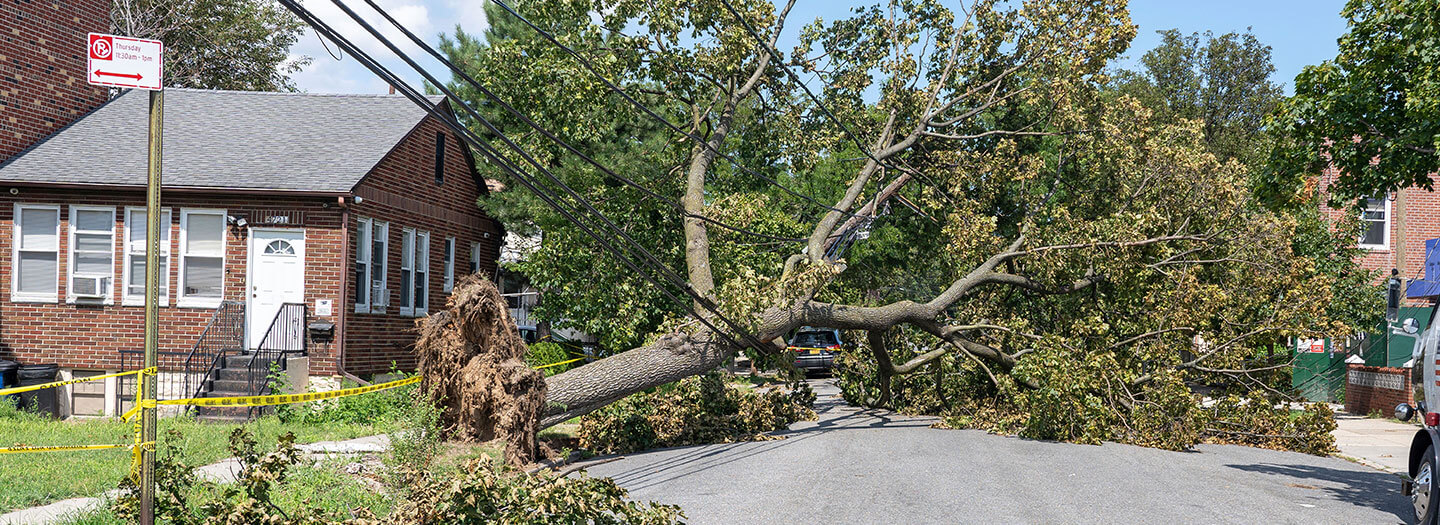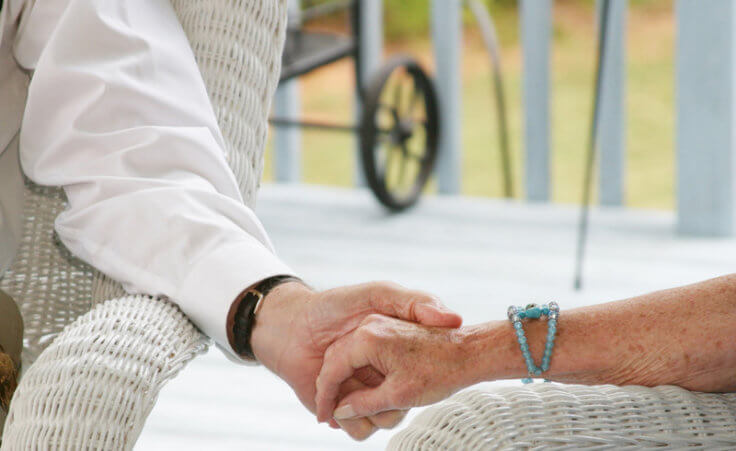
A tree which brought down power lines lies on the street at the Astoria neighborhood after Tropical Storm Isaias battered the region. (Photo by Ron Adar / SOPA Images/Sipa USA)(Sipa via AP Images)
Trees and shrubs in Long Island, New York are having a hard time deciding between summer and autumn.
That’s not a hard decision for folks like me in Texas, where summer temperatures regularly exceed one hundred degrees.
I am ready for autumn by mid-July.
A few weeks ago, Tropical Storm Isaias hit the East Coast and turned the vegetation along Long Island into a two-sided phenomenon. The southern sides of the trees and shrubs are brown and withered, giving the appearance of late autumn, while the northern sides are still lush-green.
Why the oddity?
According to the National Weather Service, “Tropical Storm Isaias had strong winds associated with it on Long Island, but not much rainfall.”
Forecasters believe this “weird occurrence” was due to the blowing of ocean spray containing sea salt onto the southern side of the vegetation, then a lack of rain allowed the spray to remain.
Are we two-faced?
Many of us are like those “two-faced” trees.
We are our best selves in the pews on Sunday (at least before the pandemic, when we could still sit in pews), then we are back to life as usual. It’s as if we have split personalities.
Our culture tells us that the spiritual and secular worlds should be separate, that religion is personal and not public. But Christianity is not a religion; it’s a 24/7 personal relationship with God. He’s a loving Father who desires to bless us and help us navigate everyday life, and not just on Sundays.
In Revelation, Jesus’ message to the church of Laodicea addressed their “two-faced” loyalty. They were “neither cold nor hot.”
In the context of this article, we could say they were neither brown nor green.
The church of Laodicea was the only one of the seven churches mentioned in Revelation that Jesus did not praise in any way. He told the church that, because they were “lukewarm,” he would “spit [them] out of [his] mouth” (Revelation 3:15–16).
Have you ever taken a sip of lukewarm coffee expecting it to be hot?
That’s the feeling.
Stay close to the source
The Laodicean Christians understood the reference behind the phrase “cold nor hot.”
Their only water source was an aqueduct which carried water from two sources that were miles away. One was fed by snow from the mountains to the south, and the other from hot springs on the northern side. The first source started out at freezing temperatures, the second at boiling temperatures.
But the farther the water got away from its source, the less like the source it was. By time it reached Laodicea, through stone pipes under the sun, the water was lukewarm.
Laodicea was a town of affluence. The church there had this mantra: “I am rich, I have prospered, and I need nothing” (v. 17).
But self-sufficiency decays the soul. The church in Laodicea was an exemplar of this. To the outside world, they were lush and green. To Jesus, they were brown and dying. He told them they were “wretched, pitiable, poor, blind, and naked” (v. 17).
They had gotten far away from their source of nourishment. Similarly, the more self-sufficient we become, the less we see our need for Jesus. We can become so dependent on our material resources, our technology—our constant “noise”—that Jesus has to shout to get our attention.
However, Jesus’ message to the Laodiceans was followed by an invitation of hope: “Those whom I love, I reprove and discipline, so be zealous and repent. Behold, I stand at the door and knock. If anyone hears my voice and opens the door, I will come in to him and eat with him, and he with me” (vv. 19–20).
In the days of early Christianity, dinner was a long meal with plenty of time for fellowship. The believers in Laodicea would have understood that to dine with Jesus meant to fellowship with him—or, in other words, to have a personal relationship with him.
When we separate our spiritual lives from our secular lives, we leave Jesus standing outside the door, knocking to be admitted.
The famous painting called “Light of the World” and a subsequent one called “Christ at Heart’s Door” both depict a door without an outside handle. The door can only be opened from the inside.
Sitting down for a big meal and enjoying the fellowship of others is more satisfying than grabbing a quick bite on the run. Jesus is inviting us to a feast, a personal time of fellowship, and not a fast-food meal.
The only way to keep from becoming “two-faced” and “lukewarm” is to stay close to the Source, on Sunday and every day.












